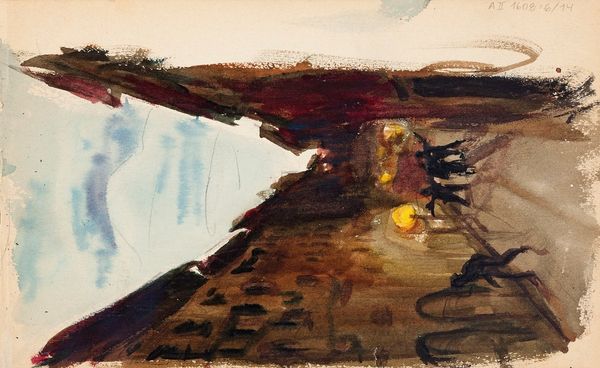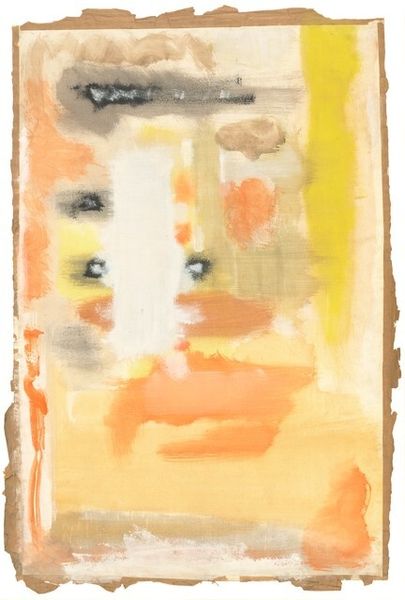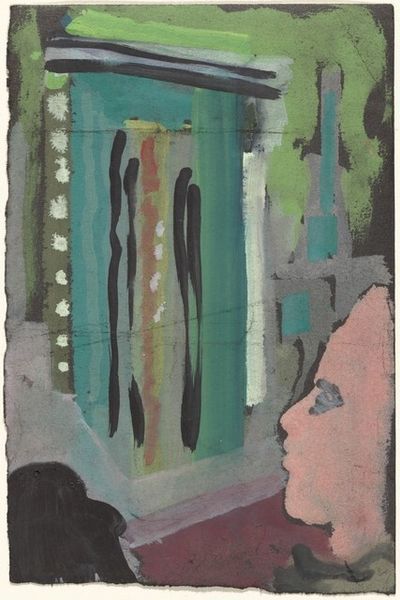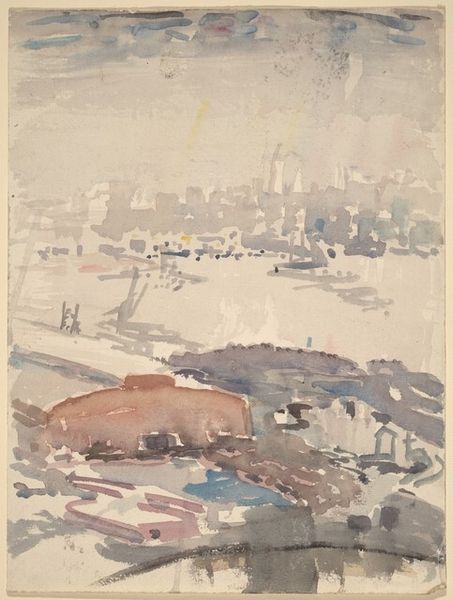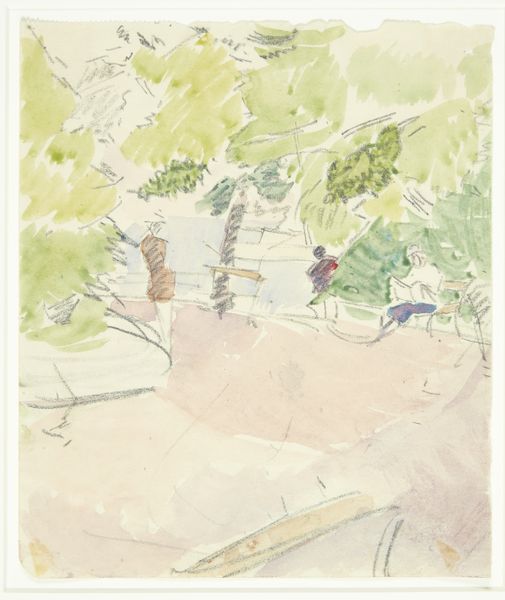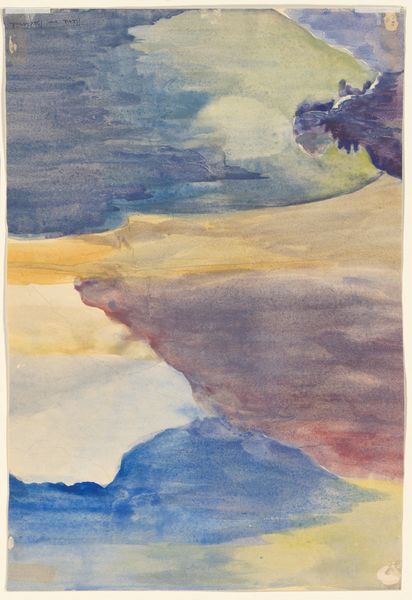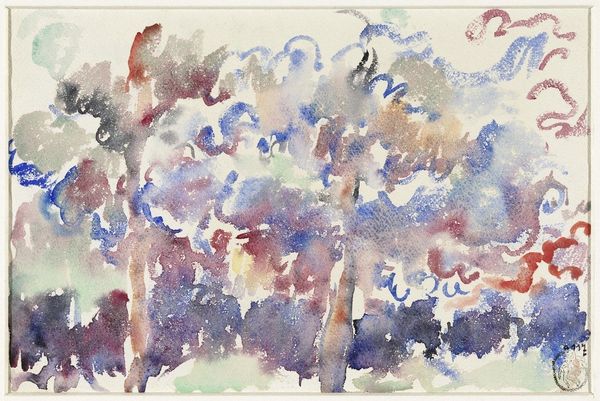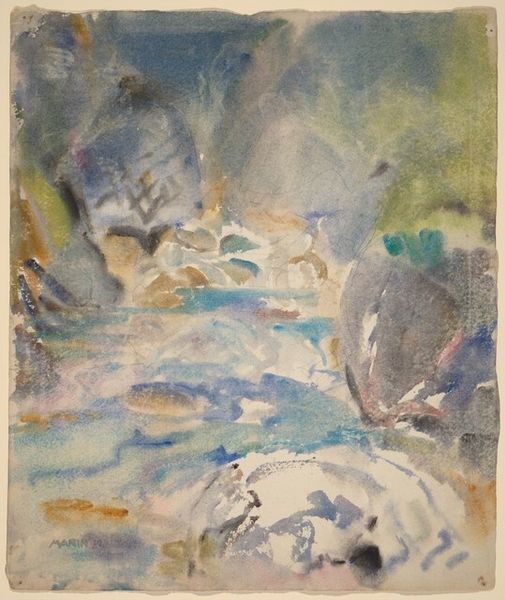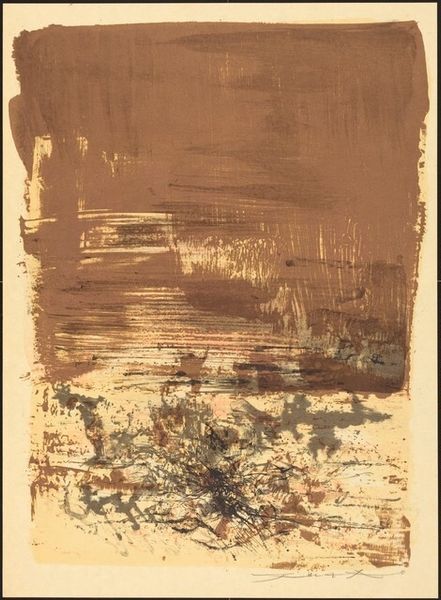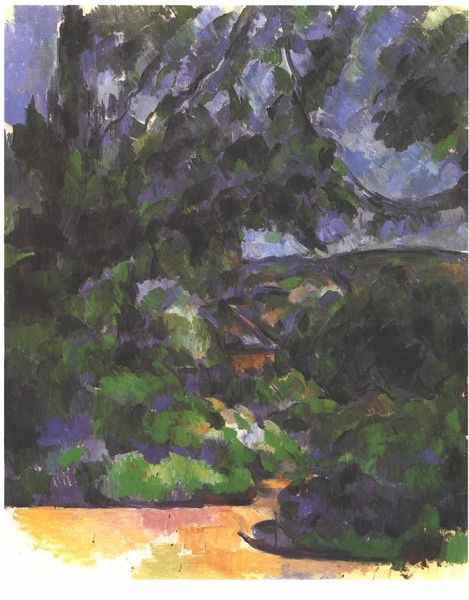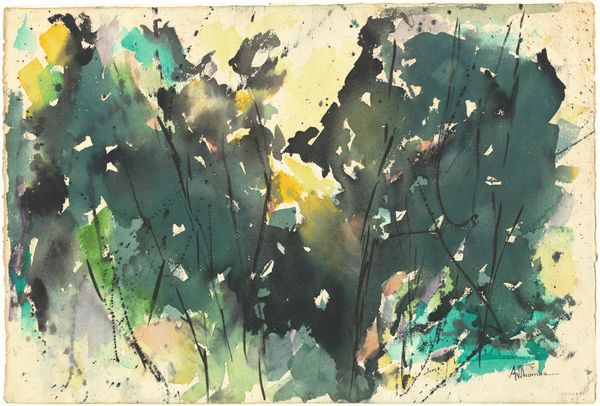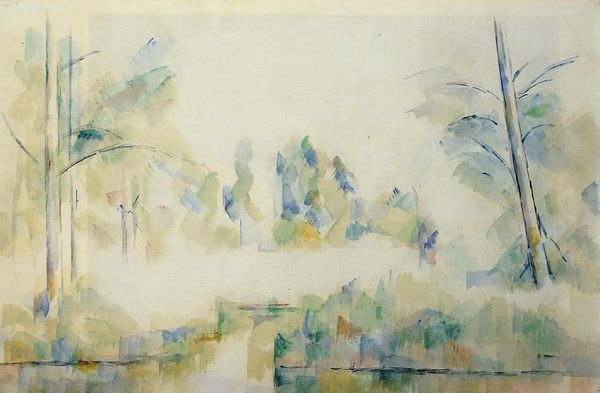![Landscape Scene with a Docked Boat [verso] by Mark Rothko](/_next/image?url=https%3A%2F%2Fd2w8kbdekdi1gv.cloudfront.net%2FeyJidWNrZXQiOiAiYXJ0ZXJhLWltYWdlcy1idWNrZXQiLCAia2V5IjogImFydHdvcmtzLzQ4YTk1NjViLTE0NDItNGE0MC1hNGJjLTM1MDkwMGI2ZGVhMy80OGE5NTY1Yi0xNDQyLTRhNDAtYTRiYy0zNTA5MDBiNmRlYTNfZnVsbC5qcGciLCAiZWRpdHMiOiB7InJlc2l6ZSI6IHsid2lkdGgiOiAxOTIwLCAiaGVpZ2h0IjogMTkyMCwgImZpdCI6ICJpbnNpZGUifX19&w=1080&q=75)
drawing, painting, plein-air, watercolor
#
drawing
#
painting
#
impressionism
#
plein-air
#
landscape
#
watercolor
#
watercolor
Copyright: National Gallery of Art: CC0 1.0
Editor: Here we have Mark Rothko’s "Landscape Scene with a Docked Boat," a watercolor painting. The colors are muted, almost faded, and create a hazy, dreamlike scene. How do you interpret this work, especially considering its connection to Rothko’s broader artistic trajectory? Curator: Rothko is largely known for his abstract expressionist paintings. This, on the other hand, presents itself as a plein-air landscape; yet the scene feels somehow…unfinished, more concerned with emotional response to a place, than representing it faithfully. Knowing the cultural context, doesn’t this departure raise questions for you about landscape as a genre? How can a scene depict a sense of alienation or connection to place, a common theme explored within social geography? Editor: That's fascinating. I hadn't considered the sense of alienation. It makes me think about who had access to leisure and landscape at the time. I now see the potential reading of social inequalities in it. Curator: Exactly. Think of the socio-economic disparities reflected in depictions of landscapes – who is included, who is excluded, what kind of activities are highlighted? Rothko's loose interpretation invites us to reflect on the politics embedded within landscape painting. Does this reframe your understanding of its mood? Editor: Definitely. It feels less purely aesthetic and more like a subtle commentary on societal structures and access to nature. The haziness, then, becomes almost like a filter or barrier. Curator: Precisely. Considering Rothko's move toward abstraction later, we could even argue this work prefigures a deliberate stripping away of representational elements to reveal deeper emotional truths, beyond any specific place. Editor: This discussion really changes my view of Rothko's early work. I now see this painting, and landscape paintings more broadly, through the lens of cultural commentary. Curator: And that’s the beauty of art history—revealing those unexpected connections and perspectives!
Comments
No comments
Be the first to comment and join the conversation on the ultimate creative platform.
